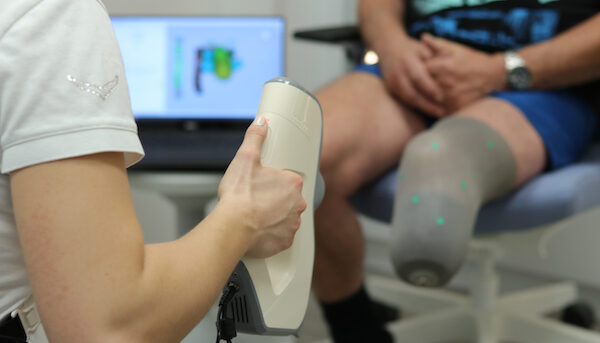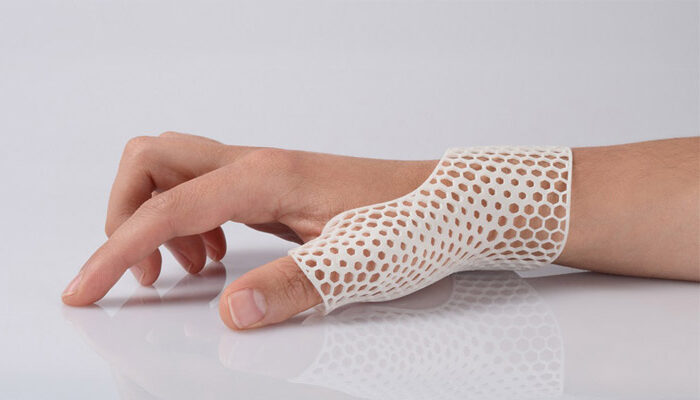Tracks
The aim of the Conference is to present the most recent studies and advanced results in the field of rehabilitation therapies exploiting Virtual Reality environment and games, to enhance patient engagement.
Track 1
This track will focus on the 3D scanning of human body to obtain data to feed the design workflow. The customisation of medical devices indeed requires a reliable knowledge of the body shape, in order to design comfortable bespoke appliances. To this extent, different scanning equipment are available on the market, while many research approaches are based on purposely developed devices. The track will then focus on the possible scanning solution, and on the main issue related to data post-processing.
Track responsible: Paolo Neri, University of Pisa
Track 2
The development of bespoke interactive devices has the potential to provide superior user experiences when compared to off-the-shelf devices, and this track considers a range of topics and their interrelationship in the design process. In order to set out appropriate design directions, careful articulation of user requirements through human-centred, co-design approaches is required. In realising product geometries, the adoption of additive manufacturing and other digitally-driven techniques offers greater freedom and the ability to harness computational power in the generation of personalised design solutions. Manufacturing such devices requires consideration of issues such as tolerances, electronics integration, surface finishing etc. which have an impact on the technology maturity level, and hence on the market-readiness emerging devices. To this end, specific simulation and testing procedures must be must be integrated within the development from an early stage, allowing better planning of resources
Track responsible: Francesco Tamburrino, University of Pisa
Track 3
This track focusses on the design of VR experiences, games and interfaces for both rehabilitation and for facilitating access to everyday living activities. This design process can be multifaceted and dependent on specific user requirements, characterised by disability, injury or other clinical characteristics. A key commonality is the focus on human-centred design techniques to provide configurable access to accommodate a broad space of user needs. The goal of these VR experiences can be similarly varied. While some people may seek to relearn skills that have been impaired by e.g. injury or stroke, others may want to use these interfaces to practice everyday living skills in a safe and controlled virtual environment that can adjust to their specific physical characteristics. This track invites submissions across these themes, including interface design, interaction methods, evaluation protocols and examples of games and experiences.
Track responsible: Beatrice Aruanno, University of Pisa
Track 1
3D acquisition for medical applications

- Custom devices for human scanning
- Point clouds postprocessing procedure
- Automatic clouds registration
- Non-invasive and fast scanning setup
- User experience evaluation
- User-based device design
Track 2
Design and development of rehab devices

- Elicitation of requirements for rehab devices
- DfAM for electronics integration
- Validation and verification test plans
- Certification issues for bespoke rehab devices
- Manufacturing process selection for bespoke rehab devices
- Requirements and co-design approaches
- Algorithmic and computational approaches to form generation
- DfM for personalisation/adaptability
- Electronics integration for digital monitoring
- Simulation and testing of wearable/deformable structures
Track 3
Experiences and evaluation of VR rehab

- Games and experiences
- Interaction methods
- Evaluation protocols
- Interface design and accessibility
- Novel hardware
- User testing
Oral Presentations
Each oral presentation should last for 10 minutes, followed by 5 minutes for questions and answers.
Please use the template available here.
PRESENTATIONS TIMETABLE
TRACK 1: 3D acquisition for medical applications
13th October, 11:30 - 13:00
- An ad-hoc solution for ear anatomy acquisition in pediatric setting. Servi, Michaela; Mussi, Elisa; Profili, Andrea; Volpe, Yary
- Customized implant of cervical prostheses exploiting a predictive analysis of Range Of Motion. Cucinotta, Filippo; Mineo, Rosalia; Raffaele, Marcello; Salmeri, Fabio; Sfravara, Felice
- Automatic Range Maps Alignment for the Reconstruction of Upper Limb Anatomy. Di Angelo, Luca; Di Stefano, Paolo; Guardiani, Emanuele; Neri, Paolo; Paoli, Alessandro; Razionale, Armando Viviano
- Development of an adaptable 3D rigged model for the design of bespoke devices for upper limb rehabilitation. Aruanno, Beatrice; Barone, Sandro; Neri, Paolo; Paoli, Alessandro; Tamburrino, Francesco
- Application of a computational method based on 3D scans for burn scar topology characterization. Dalle Mura, Francesco; Furferi, Rocco; Governi, Lapo; Pugelli, Luca
- An Effective Methodology for Movement Evaluation in Patients with Parkinson’s Disease. Calì, Michele; Durand, David; Bosche, Jerome
TRACK 2: Design and development of rehabilitation devices
13th October, 14:45 - 16:00
- Prototyping approaches for rehabilitation devices: From product embodiment to data management. Urquhart, Lewis; Petrakis, Konstantinos; Hansen, John Paulin; Wodehouse, Andrew; Mariani, Milton Edgardo; Lauer-Schmaltz, Martin Wolfgang; Loudon, Brian
- Towards a Multi-Perspective Based Ontology to Develop Smart Wearables for Paediatric Habilitation. Bonello, Matthew; Farrugia, Philip
- An Affordance-Based Requirements Approach for Developing Therapeutic Artefacts – A case study of Speech and Language Toys. Balzan, Emanuel; Farrugia, Philip; Casha, Owen; Frendo Wirth, Louisa; Gatt, Daniela
- Towards a Novel Axiomatic Design Methodology to Support Manufacturing Process Selection from Multi-User Requirements Mapping: A Case Study for Upper-Limb Rehabilitation Devices. Abela, Edward; Farrugia, Philip; Vella, Pierre; Cassar, Glenn; Gauci, Maria V.; Balzan, Emanuel
- Workspace placement of motion trajectories by manipulability index for optimal design of Cobot assisted rehabilitation solutions. Caramaschi, Marco; Onfiani, Dario; Pini, Fabio; Biagiotti, Luigi; Leali, Francesco
TRACK 2: Design and development of rehabilitation devices
14th October, 11:30 - 12:00
- Concept generation and preliminary prototyping of a tailored smart glove with pressure sensors for force grip analysis in cycling. Caporaso, Teodorico; Bellitti, Paolo; Grazioso, Stanislao; Serpelloni, Mauro; Sardini, Emilio; Lanzotti, Antonio
- A digital workflow for the design and the additive manufacturing of dental aligners. Aruanno, Beatrice; Barone, Sandro; Bordegoni, Monica; Razionale, Armando V.; Tamburrino, Francesco
TRACK 3: Digital rehabilitation: games and testing
14th October, 12:00 - 12:30
- A usability study of an application to configure Virtual Reality training environments for wheelchair users. Mondellini, Marta; Colombo, Vera; Mottura, Stefano; Sacco, Marco; Biffi, Emilia; Davalli, Angelo; Arlati, Sara
- Designing and Integrating Electronics for Bespoke Rehabilitation Experiences in Virtual Reality. Soomro, Sohail Ahmed; Nanjappan, Vijayakumar; Georgiev, Georgi V.
